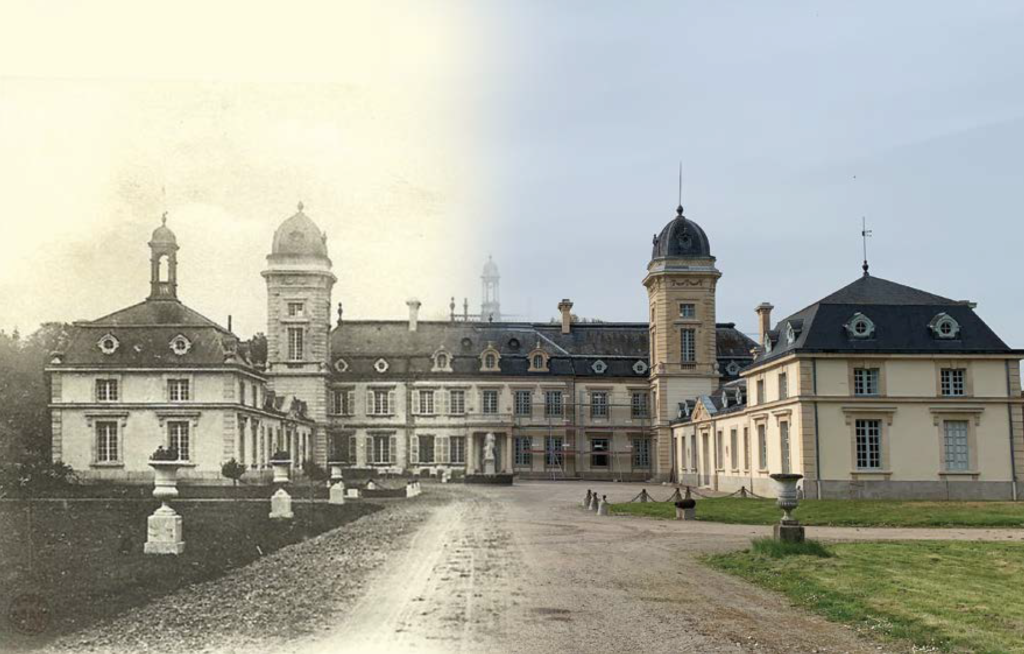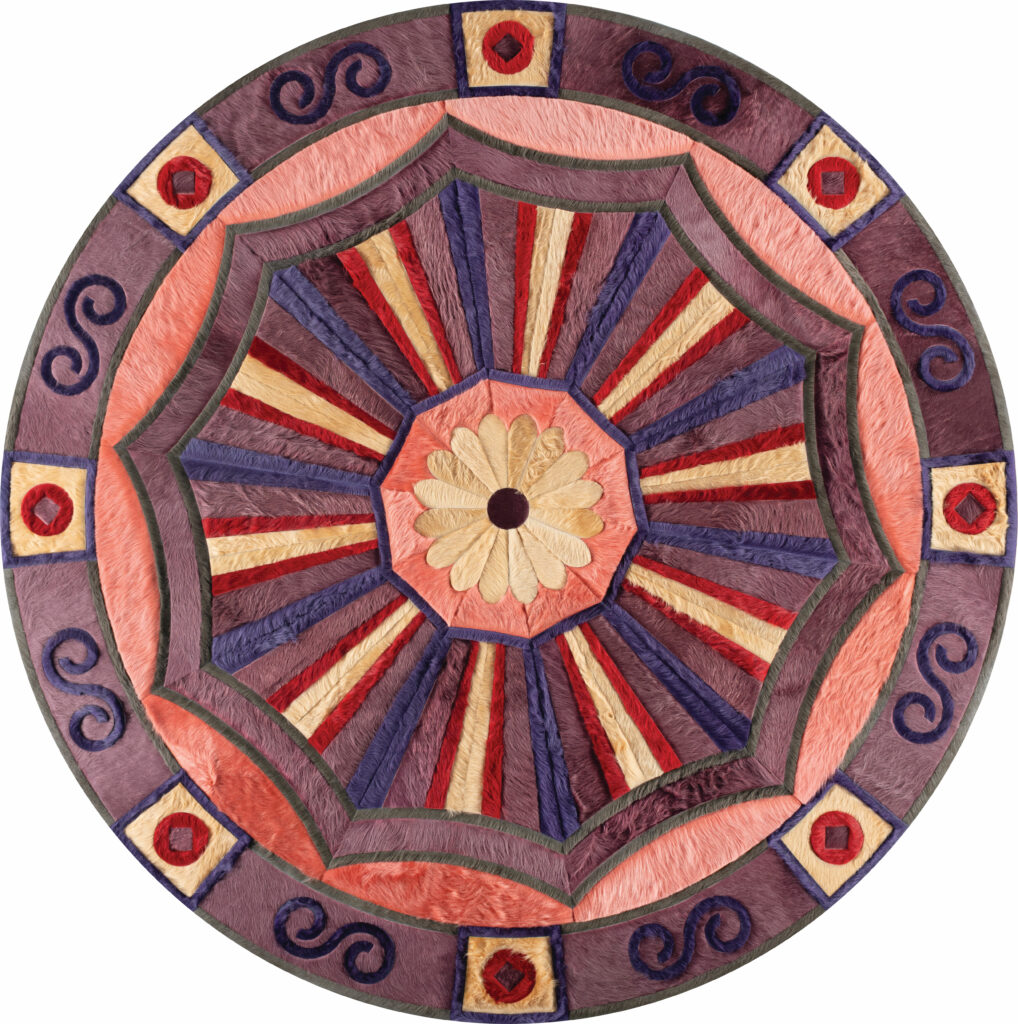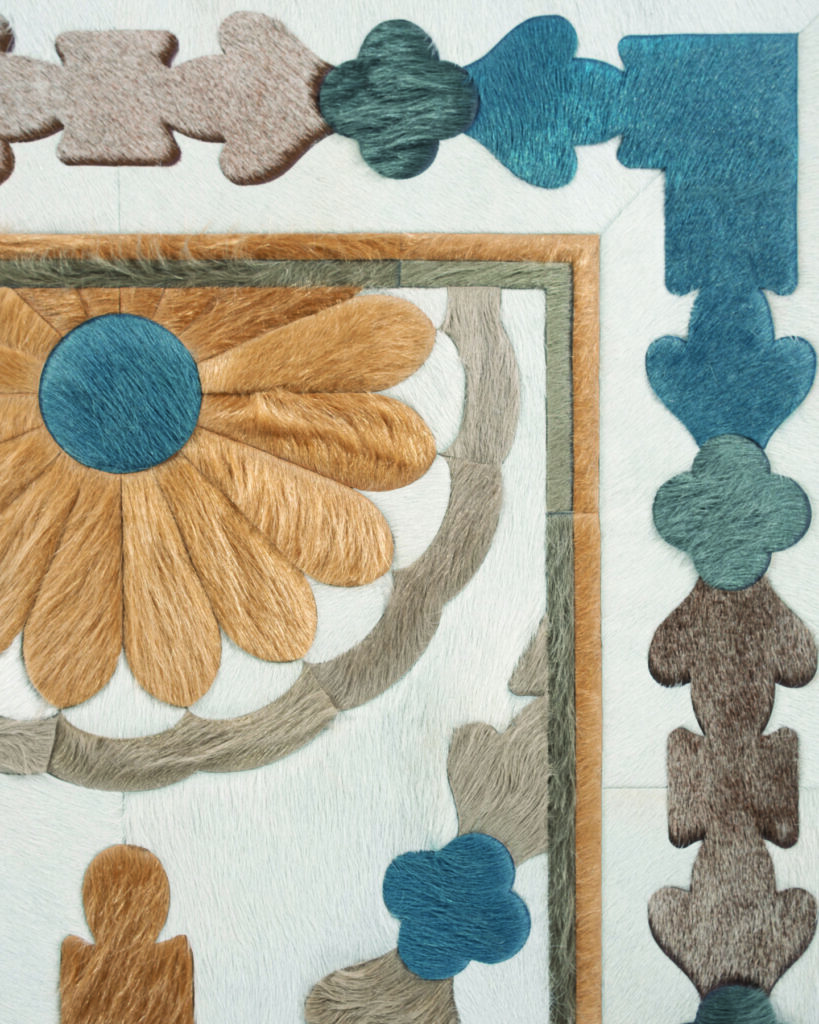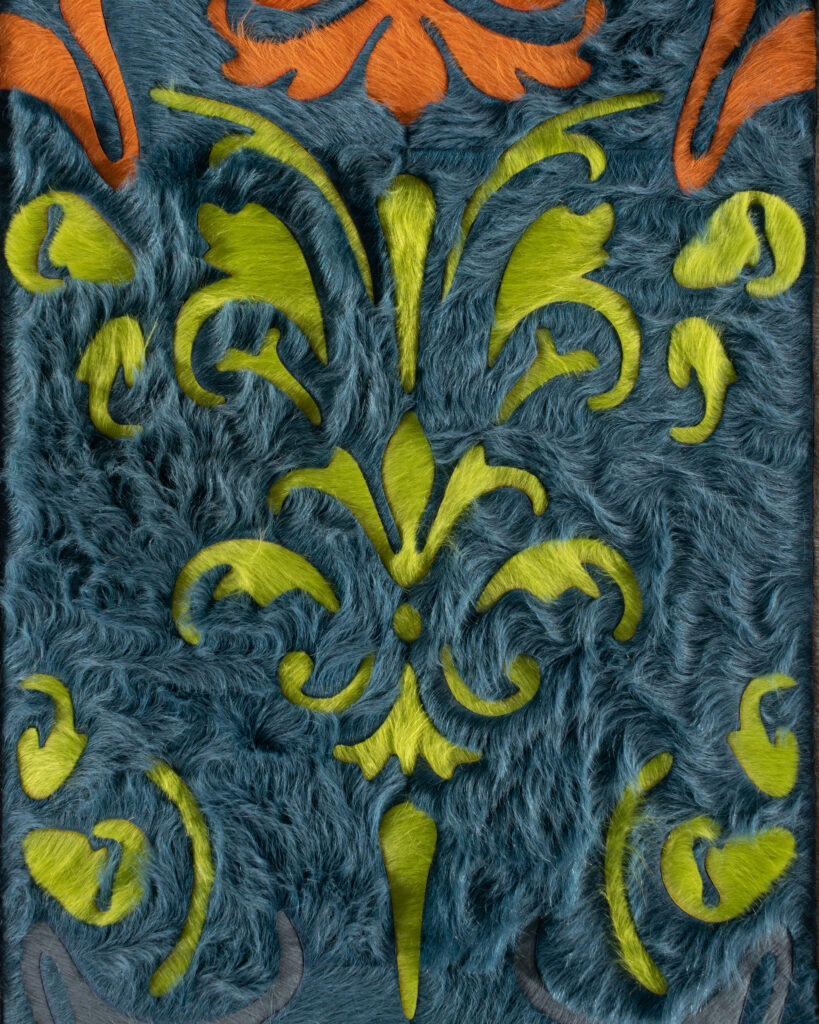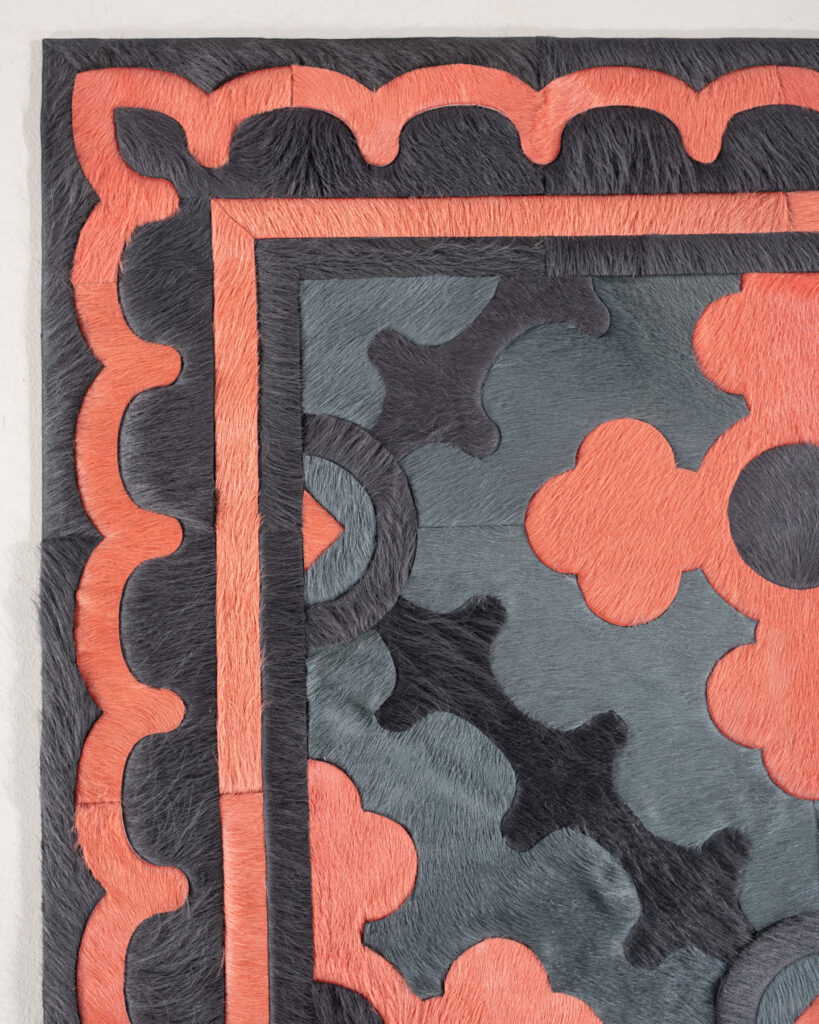Text: Erika Heet
Published as:
Kyle Bunting and Timothy Corrigan: Château Collection
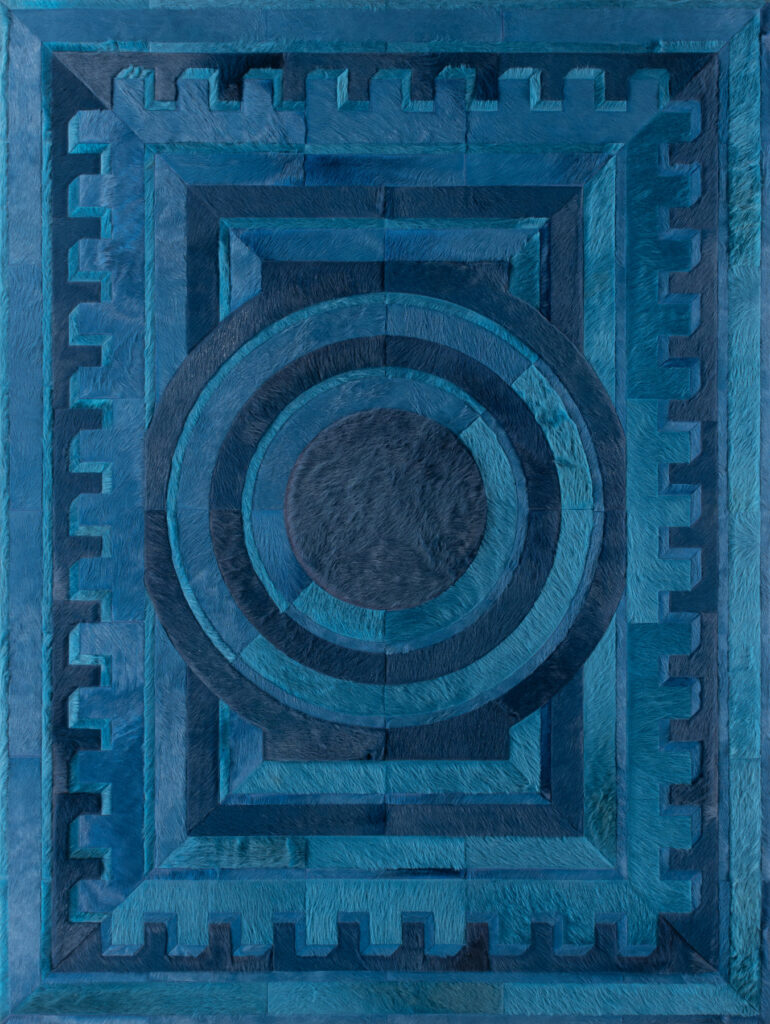
During Maison et Objet a few years back, longtime friends and collaborators Kyle Bunting and Timothy Corrigan found themselves dashing between Paris and the Loire Valley to visit Corrigan’s ambitious new project: the Château de la Chevallerie, a grand 17th-century estate with lovely additions spanning through the 19th century. “We were in this little car going back and forth from Paris to the château, winding through the streets, getting mud all over our shoes, and finding a natural way to do something together in a place that was becoming fundamental to our creative work,” Bunting remembers. The château’s exquisite architecture, patterns, materials and intricate moldings inspired the pair to do something unprecedented: create a rug collection with traditional European motifs and concepts, rendered in hide.
Pulling this off would require minds such as Corrigan’s—whose knowledge of European design and history is dizzying and encyclopedic, his enthusiasm infectious—and Bunting’s, who has revolutionized the hide rug and collaborated with designers and artists to continuously elevate the milestones he alone has achieved for the genre. They set to work right there in the château, playing with patterns and colors on a work table set up in the pink dining room, enveloped in the myriad influences, eras and designs of French history. Then Covid hit, and work on the château slowed to a crawl. But Bunting and Corrigan pressed on. They narrowed the collection to six patterns: Aubusson, Boulle, Empire, Moderne, Polonaise and Savonnerie. “We resigned ourselves to finding a way, when the world is reopening and reblooming, to put it out and share it, so it can be appreciated and enjoyed as a perfect collection in an imperfect world,” Bunting says.
Aubusson, Polonaise and Savonnerie all have their foundations in European rug designs. Aubusson is inspired by 18th and 19th century English and French rugs with floral and leaf patterns. “It’s a knockout,” Corrigan says. “It almost feels the most contemporary.” Polonaise was shaped by the 16th and 17th century Persian emperors’ workshops for the Royal Courts of Europe, bursting with acanthus leaf vines and flowers. Savonnerie, defined by intricate shading and a central floral shape, pays homage to Louis XIV’s rug workshop established to rival the finest in the world. Boulle, Empire and Moderne have farther-reaching foundations. Boulle, named for master cabinetmaker André-Charles Boulle, a favorite of Louis XIV, translates his intricate wood carvings and feathery marquetry into a dramatic ombre, resulting in what Corrigan calls “rich, detailed interpretations of 17th-century motifs.” Empire uses Greek and Egyptian forms influential in the early 19th century Empire period, in colors that resonate today (coral and charcoal gray). Moderne, with its geometries of 1920s French design, is where the subtleties of Bunting’s prowess in hide truly resonate. Presented in deep black with shades of white and gray, or a mélange of lavenders and purples, or a monochromatic blue, Moderne reveals the variations inherent in the hide that result in a 3D effect with great variance of hues that appear to jump forth from the piece. “What I love about Moderne is it has a contemporary flair to it,” Bunting says. “The essence of what we’re doing is showing a broad array of compelling, unique modern colorways.”
“I designed a lot of these rugs with specific rooms in mind at the château,” notes Corrigan. “Aubusson was designed for the library, which is early 19th century Empire style, and Savonnerie for an 18th century jewel box room that’s going to be my office. As I was working on the designs, I thought, what would be in this room if I were going to be a rug?” Corrigan brought his knowledge of the colors historically employed in each design’s era, which Bunting studied and modified for a modern interpretation in his medium of artistic expression. “I’m really happy about where we ended up landing,” Bunting says. “When you’re reinterpreting traditional European design in hide, there’s a method to the madness. Too curated would feel manufactured. We’re right in our comfort zone of vibrancy and color,” he continues. “At one point we said, ‘Hell, let’s go for it. Let’s put a spin on it.’ It’s what we do.” Kyle Bunting, kylebunting.com
